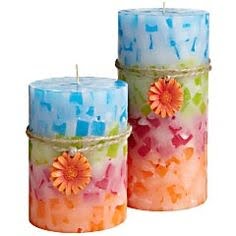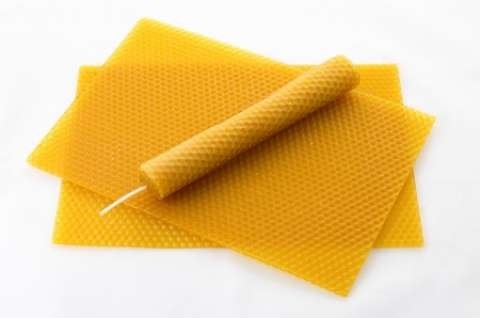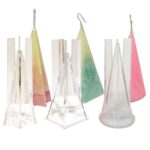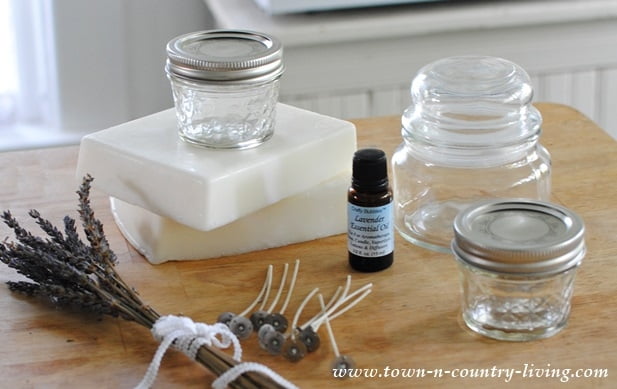Beeswax has become an increasingly popular choice for candle making, and it’s no surprise why. With its natural and eco-friendly qualities, beeswax offers a unique alternative to traditional candle-making materials. In this blog post, we will delve into the world of beeswax candles and explore whether or not beeswax is truly good for candle making.
When it comes to sustainability, few options can compare to beeswax. This natural wax is produced by honeybees in their beehives, making it a renewable resource. The extraction process involves melting and straining the wax, ensuring that no harmful chemicals or additives are involved. For those who prioritize eco-conscious choices in their candle-making endeavors, beeswax is a standout option.
In addition to its sustainable nature, beeswax offers several other appealing qualities for candle making. Its natural aroma provides a warm and inviting atmosphere when burned, creating a pleasant ambience in any space. Furthermore, unlike many synthetic waxes on the market today, beeswax does not release toxins when burned. This makes it an ideal choice for those with sensitivities or allergies.
As we explore the question of whether beeswax is good for candle making further in this blog post, we will delve into its unique characteristics and advantages over alternative waxes such as soy wax and paraffin wax. We will also provide step-by-step instructions on how to work with beeswax effectively and address common misconceptions about using this material in candle-making projects.
So let’s dive into the world of beeswax candles and discover why they have become a favored choice among crafters worldwide.
The Origins and Extraction Process of Beeswax
Where Beeswax Comes From
Beeswax, as the name suggests, is produced by honeybees. It is formed in the bee’s wax glands, located on the underside of their abdomens. Worker bees are responsible for producing beeswax to be used for various purposes in the hive, including building honeycomb cells and sealing them. Beeswax is essentially a mixture of long-chain fatty acids and esters.
Extracting Beeswax
To obtain beeswax for candle making, it needs to be extracted from beehives. The process typically involves harvesting honeycombs that contain beeswax and then separating the wax from other components such as honey and propolis. One method commonly used is called solar extraction, where honeycombs are placed in heated trays or tanks to melt the wax. The melted wax can then be strained or filtered to remove impurities before it is ready to be used in candle-making.
Sustainability of Beeswax Harvesting
When it comes to sustainability, beeswax stands out as an eco-friendly option for candle making. Unlike other waxes derived from petroleum products or crops like soybeans, beeswax is a byproduct of natural processes within the beehive. By harvesting excess beeswax that would otherwise go unused by the bees themselves, we can make use of this valuable resource without harming the overall health and well-being of honeybee colonies.
Furthermore, sustainable beekeeping practices promote healthy bee populations and support pollination efforts essential for food production. By purchasing beeswax from responsible beekeepers who prioritize the health and welfare of their hives, candle makers can contribute to conservation efforts while enjoying all the benefits that beeswax has to offer in their craft.
The Unique Characteristics of Beeswax for Candle Making
Beeswax is a unique and highly sought-after material for candle making due to its distinctive characteristics. One of the most notable qualities of beeswax is its natural aroma, which adds a delightful scent to candles without the need for artificial fragrances. When burned, beeswax releases a subtle sweet honey-like fragrance that can create a cozy and inviting atmosphere in any space.
In addition to its pleasant smell, beeswax is also known for being non-toxic. Unlike some commercial candles made from petroleum-based waxes, beeswax does not release harmful pollutants or soot into the air when lit. This makes it an excellent choice for individuals who are concerned about indoor air quality or suffer from respiratory issues.
Furthermore, beeswax has superior burn performance compared to other candle making waxes. Due to its high melting point, beeswax candles burn slower and longer than those made from alternative materials. This means that not only do beeswax candles provide hours of beautiful illumination, but they also offer better value for money as they last significantly longer than other types of candles.
To summarize, the unique characteristics of beeswax make it an ideal choice for candle making. Its natural aroma adds a pleasant scent without the need for synthetic fragrances, while its non-toxic nature ensures clean burning without harmful emissions. Additionally, its long burn time makes beeswax candles both economical and environmentally friendly alternatives to other types of candles on the market today.
The Benefits of Using Beeswax in Candle Making
Beeswax has long been a favorite choice for candle making due to its numerous benefits and unique qualities. When it comes to creating candles, using beeswax offers a range of advantages that make it stand out from other waxes on the market.
One key benefit of using beeswax in candle making is the natural beauty and warm glow emitted by beeswax candles. Beeswax has a distinct golden color that adds an elegant touch to any space. When lit, these candles produce a soft, warm light that creates a cozy ambiance. The natural glow of beeswax candles is highly sought after by candle enthusiasts and interior decorators alike.
In addition to their visual appeal, beeswax candles also have the unique ability to release negative ions into the air when burned. Negative ions are present in nature near waterfalls, forests, and other serene environments, and they have been proven to improve air quality by purifying it from dust, allergens, and pollutants. By choosing beeswax candles over other types of wax, you can enjoy not only a pleasing aesthetic but also the potential health benefits associated with clean indoor air.
Furthermore, beeswax burns longer and cleaner than many other waxes commonly used in candle making. Due to its high melting point and dense composition, beeswax has a slower burning rate compared to alternatives like soy wax or paraffin wax.
This means that your beeswax candles will last longer, providing hours upon hours of burn time. Additionally, because beeswax is all-natural and free from toxins or artificial additives frequently found in other waxes, it produces very little smoke or soot when burned.
The benefits of using beeswax in candle making are undeniable-its natural beauty, warm glow, ability to purify the air, extended burn time, and clean burning nature set it apart from other choices on the market. If you’re looking for an eco-friendly and sustainable option that adds a touch of elegance to your space while providing potential health benefits, beeswax is definitely worth considering for your candle-making projects.
Comparing Beeswax to Other Candle Making Waxes
When it comes to candle making, there are a variety of wax options available, each with its own unique qualities and characteristics. One popular choice among candle makers is beeswax. In this section, we will compare beeswax to other common candle making waxes such as soy wax and paraffin wax, highlighting the differences in fragrance throw, burn time, and overall quality.
Beeswax offers several advantages over other waxes when it comes to fragrance throw. Due to its natural aroma, beeswax has a subtle and pleasant scent that adds an extra touch of sophistication to candles. Additionally, beeswax has a high melting point, which allows the wax to release fragrance slowly and evenly throughout the burning process. This means that beeswax candles tend to have a longer-lasting scent compared to candles made with other waxes.
In terms of burn time, beeswax candles have a significant advantage over many other waxes. Beeswax is known for its slow-burning properties, meaning that it can last much longer than candles made with soy wax or paraffin wax. This makes beeswax an excellent choice for those who want their candles to be enjoyed for extended periods of time without frequent replacement.
| Wax Type | Fragrance Throw | Burn Time | Overall Quality |
|---|---|---|---|
| Beeswax | Subtle and long-lasting scent | Slow-burning | High-quality appearance and performance |
| Soy Wax | Varies depending on blend | Shorter burn time compared to beeswax | Natural and eco-friendly option |
| Paraffin Wax | Strong fragrance throw | Shorter burn time compared to beeswax | Cost-effective and widely available |
Overall, beeswax stands out for its high-quality appearance and performance. Beeswax candles have a warm glow and smooth texture that adds a touch of elegance to any space. The long-lasting burn time, combined with the natural beauty of beeswax, makes it a favorite among candle enthusiasts.
While beeswax may be slightly more expensive than soy wax or paraffin wax, its many advantages make it a worthwhile investment for those who value quality and sustainability in their candle making endeavors. Whether you’re creating candles for personal use or as gifts, beeswax is definitely worth considering for its fragrance throw, burn time, and overall quality.
How to Work with Beeswax in Candle Making
Step 1: Melting Beeswax
One of the first steps in working with beeswax for candle making is melting it down. Beeswax has a high melting point, typically around 144 to 147 degrees Fahrenheit (62 to 64 degrees Celsius), so it requires gentle heat to melt without causing damage. To melt beeswax, you can use a double boiler method or a slow cooker.
To use the double boiler method, fill a large pot with water and place a smaller pot or heat-safe container on top. Add the beeswax to the smaller pot and heat the water over low to medium heat. Stir occasionally until the beeswax melts completely. Keep an eye on the temperature, as overheating can reduce the quality of the wax.
If you prefer using a slow cooker, place some water in the bottom of the slow cooker and add chunks of beeswax into a heat-safe container. Set the slow cooker on low and allow the wax to melt slowly over several hours. Stir occasionally for even melting.
Step 2: Pouring Molds
Once your beeswax is melted, it’s time to pour it into molds to form your candles. Prepare your molds by securing wicks at their centers and ensuring they are straight and centered in each mold. You can use specialized candle molds, silicone molds, or even repurpose household items like mason jars or tea cups as unique containers for your beeswax candles.
Slowly pour the melted beeswax into each mold, taking care not to overflow them. Allow enough room at the top for any potential shrinkage during cooling. As you pour, ensure that each wick stays centered and upright.
Step 3: Wick Selection
Choosing the right wick is crucial for proper burning in beeswax candles. The type and size of the wick will depend on the diameter of your mold or container, as well as the desired burn time for your candles. Generally, cotton wicks work well with beeswax candles.
To determine the appropriate size of wick, consider the diameter of your container. For example, a container with a 2-inch diameter would typically require a small-sized wick. It’s important to follow guidelines provided by candle-making suppliers or conduct some experimentation to find the best wick size for your specific needs.
When attaching the wick to each mold or container, ensure it is secured tightly at the bottom to prevent it from moving during pouring and cooling.
By following these steps and experimenting with different techniques, you can create beautiful and fragrant beeswax candles that bring warmth and ambiance to any space.
Common Misconceptions about Beeswax for Candle Making
When it comes to candle making, there are several misconceptions surrounding the use of beeswax as a candle-making ingredient. In this section, we will address and debunk these common misunderstandings, providing insight into why beeswax is actually a cost-effective and user-friendly option for candle making.
One common misconception surrounding beeswax is that it is expensive and therefore not a practical choice for candle making. While it’s true that beeswax can be more expensive than other waxes such as soy or paraffin, its unique qualities and benefits outweigh the cost.
Beeswax burns longer and cleaner than other wax options, which means you’ll get more burn time out of each candle. Additionally, the natural beauty and warm glow emitted by beeswax candles make them an attractive choice for many candle enthusiasts.
Another misconception is that working with beeswax requires specialized knowledge or equipment. In reality, beeswax can be melted and poured using basic supplies found in most kitchen or craft stores. The melting process can be done using a double boiler or even a slow cooker set on low heat.
As for pouring molds, silicone molds are affordable and readily available for creating your own unique candle shapes with beeswax. Wick selection is also straightforward, with pre-tabbed wicks designed specifically for use with beeswax readily available.
Misconceptions about the environmental impact of using beeswax in candle making are also prevalent. Some may assume that using bee products contributes to harm towards bee populations; however, responsible sourcing practices ensure minimal impact on bee colonies. Beeswax harvesting is often done alongside honey extraction to minimize disruption to the hive, ensuring sustainable practices are followed.
Debunking these misconceptions reveals that beeswax is not only worth considering for candle making but also offers numerous advantages over other wax options. Its natural qualities, longer burn time, and minimal environmental impact make beeswax a compelling choice for both experienced candle makers and those new to the craft.
Common Misconceptions about Beeswax for Candle Making
| Misconception | Debunked Fact |
|---|---|
| Beeswax is expensive and not cost-effective. | The longer burn time and unique beauty of beeswax candles make them worth the investment. |
| Working with beeswax requires specialized knowledge or equipment. | Basic kitchen or craft supplies can be used to melt, pour, and create unique shapes with beeswax. |
| Using beeswax contributes to harm towards bee populations. | Responsible sourcing practices ensure minimal impact on bee colonies during beeswax harvesting. |
Caring for Beeswax Candles
Proper care and maintenance of beeswax candles can help maximize their lifespan and ensure optimal burning performance. Here are some tips on how to care for your beeswax candles:
- Trim the wick: Before lighting your beeswax candle, always trim the wick to about ¼ inch. This helps prevent a large flame and excessive dripping of wax.
- Avoid drafts: Place your beeswax candles away from drafts, such as open windows or air vents. Drafts can cause uneven burning and lead to a shorter burn time.
- Burn in suitable holders: It’s important to use a proper candle holder when burning beeswax candles. Beeswax has a low melting point, so it is best to use heat-resistant holders that can withstand the heat released by the candle.
- Store properly: When not in use, store your beeswax candles in a cool, dark place away from direct sunlight or high temperatures. Exposure to heat and light can cause the wax to soften or discolor.
- Clean off debris: After each use, remove any debris, such as burnt wick pieces or dust, from the surface of the candle.
- Repurpose leftover wax: If you have any leftover bits of beeswax from burned-out candles, don’t let them go to waste. You can repurpose them into new candles by melting them down or use them for other DIY projects like making lip balms or lotion bars.
By following these care tips, you can prolong the life of your beeswax candles and enjoy their warm glow and natural fragrance for longer periods. Additionally, properly cared for beeswax candles will continue to release negative ions into the air, promoting cleaner indoor air quality.
Overall, beeswax is an excellent choice for candle making due to its natural qualities and unique characteristics. By choosing beeswax candles and taking proper care of them, you can enhance your candle burning experience while also supporting sustainable and eco-friendly practices.
Conclusion
In conclusion, it is evident that beeswax is a fantastic choice for candle making. Throughout this article, we have explored the origins and extraction process of beeswax, the unique characteristics it possesses as a candle-making material, and the numerous benefits it offers. When compared to other wax options such as soy or paraffin, beeswax proves to be superior in terms of fragrance throw, burn time, and environmental impact.
One of the standout qualities of beeswax is its natural aroma and lack of toxins. Unlike synthetic waxes that can emit harmful chemicals when burned, beeswax provides a clean-burning experience that is both safe for our health and the environment. Additionally, beeswax candles burn longer and produce a warm glow that adds an inviting ambiance to any space.
Furthermore, by using beeswax candles, individuals can purify the air they breathe. Beeswax releases negative ions when burned which helps neutralize pollutants like dust and allergens, creating a healthier indoor environment. This natural air-purifying effect makes beeswax candles an excellent choice for those with respiratory issues or allergies.
Considering all these factors, it is clear that beeswax should be seriously considered for your candle making endeavors. Not only does it possess exceptional qualities in terms of beauty and performance, but it also aligns with sustainable practices and promotes a cleaner living environment. Whether you are a beginner or an experienced candle maker, incorporating beeswax into your projects will not disappoint.
So why not give it a try? Start experimenting with beeswax today and discover the wonders it can bring to your homemade candles.
Frequently Asked Questions
Is beeswax better than soy wax for candles?
Beeswax and soy wax are both popular choices for candle making, but whether one is better than the other depends on personal preference and specific needs. Beeswax has a distinct advantage when it comes to natural fragrance, as it has a pleasant honey-like scent when burned. Additionally, beeswax candles tend to have a longer burn time compared to soy wax candles.
They also produce a brighter, warmer glow that many people find appealing. However, beeswax can be more expensive than soy wax, making it less accessible for some candle makers or buyers. Ultimately, the choice between beeswax and soy wax will vary based on factors such as cost, fragrance preference, and desired burn time.
What are the disadvantages of beeswax candles?
While beeswax candles have numerous advantages, they do come with a few disadvantages to consider. One significant drawback is the cost of beeswax itself. Compared to other waxes like soy or paraffin, beeswax tends to be more expensive due to its limited availability and higher production costs.
Moreover, melting beeswax requires higher temperatures compared to other waxes, which may pose challenges for small-scale candle makers who lack specialized equipment. Additionally, some individuals may develop allergies or sensitivities towards the aroma produced by burning natural beeswax candles. These disadvantages should be considered alongside their benefits before deciding if beeswax candles are the right choice.
Is beeswax best for candle making?
While beeswax is highly regarded in candle making circles for various reasons – such as its natural fragrance and longer burn time – whether it is the absolute best option for everyone depends on individual preferences and requirements. Beeswax does possess unique qualities that make it desirable; its subtle scent adds an inviting ambiance while its long burn time provides extended enjoyment of the candle’s illumination. Additionally, when used in conjunction with cotton wicks, beeswax is considered eco-friendly as it is a renewable resource compared to petroleum-based alternatives.
However, candle makers seeking specific qualities like a wide variety of fragrances or different color options may find other types of waxes more suitable. Ultimately, what is best for candle making depends on factors such as personal preferences, desired effects, and budget considerations.

Welcome to my candle making blog! In this blog, I will be sharing my tips and tricks for making candles. I will also be sharing some of my favorite recipes.





